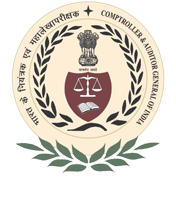Audit Reports

Tamil Nadu
Report No. 5 of the Year 2022 - Performance Audit on Outcomes in Surface Irrigation in Tamil Nadu for the year ended March 2020, Government of Tamil Nadu
Overview
Overview
Performance Audit on Outcomes in Surface Irrigation in Tamil Nadu
Government of Tamil Nadu implemented Tamil Nadu Irrigated Agriculture Modernisation and Water-Bodies Restoration and Management Project, a multidisciplinary project with 85 per cent loan assistance from World Bank through Water Resources Department. The Performance Audit covered the major projects completed before 2015 and assessed the achievement during the period from 2015-16 to 2019-20 with measurable outcomes envisaged in the Detailed Project Reports. Performance Audit of the selected projects viz., Amaravathy reservoir in Amaravathy sub-basin, Radhapuram channel in Hanumanadhi sub-basin and Kelavarapalli reservoir in Pennaiyar upto Krishnagiri sub-basin revealed the following:
Amaravathy Sub-basin
- Absence of periodical capacity surveys by the Department led to non-ensuring adequate silt storage and retardation of sedimentation in the Reservoirs. Delay in sanction of desiltation works for removal of sedimentation resulted in non-harnessing of the realised surface water to an extent of 63.793 TMC in three reservoirs which affected the irrigation needs of the crop area of the sub-basins.
- The intended outcome envisaged for Amaravathi Reservoir viz., increasing the conveyance efficiency of 20 per cent was only partially achieved even after incurring an expenditure of ` 74.99 crore on channel rehabilitation works. The conversion of gap area into fully irrigated area (22.096.17 ha) remained unachieved; and the actual irrigated area reduced during the period from 2015-16 to 2019-20 which was in the range of 12 to 57 per cent of the pre-project irrigated area. PWD failed to release water for irrigation from Amaravathi Reservoir either as per Regulations for release of water or on the basis of water requirement for the crops despite availability of sufficient water in years with good rainfall.
Radhapuram Channel
- The outcomes envisaged for Radhapuram Channel viz., increased conveyance efficiency remained partially achieved during 2020 and for the balance years 2015-16 to 2018-19 it was not susceptible for verification due to absence of adequate documentation; and the outcome of conversion gap area of 2,183 ha into fully irrigated area remained unachieved. Inadequate assessment of availability of water in the source dams and delayed release of water from Radhapuram Channel due to non-receipt of Government orders also hindered the achievement of envisaged outcomes.
Kelavarapalli Reservoir
- The intended outcome of Kelavarapalli Reservoir viz., conversion of gap area into fully irrigated area remained unachieved besides there was substantial reduction in the fully irrigated area after the implementation of the project. Failure of the department in framing the Rules of water regulations for the Kelavarapalli Reservoir even after 25 years of its completion resulted in release of water without assessing the irrigation requirements. Supply channel of Kelavarapalli Reservoir excavated to harness surface water to benefit 222 acres of agriculture land was not utilised for four years and the expenditure of ` 2.50 crore incurred remained unfruitful.
Maintenance of the rehabilitated water courses
- There were gaps in maintenance of the rehabilitated water courses as the joint inspection conducted by the Audit along with Departmental official revealed encroachments, dumping of waste, weed formation on the water course, damages to the channel structures and illegal tapping of water using motors.
Quality of irrigation water
- Department failed to monitor the quality of irrigation water and there were instances of discharge of untreated sewage water into the water courses. There were gaps in undertaking Participatory Irrigation Management activities viz., formation of Water Users Association, preparation of water budget and raising of crop for second season based on the water availability which hindered the achievement of envisaged outcomes of the project.
Download Audit Report
-
Report No. 5 of the Year 2022 - Performance Audit on Outcomes in Surface Irrigation in Tamil Nadu for the year ended March 2020, Government of Tamil Nadu
 (59.26 MB)
Download
(59.26 MB)
Download
-
Table of Contents
 (2.12 MB)
Download
(2.12 MB)
Download
-
Perface
 (1.63 MB)
Download
(1.63 MB)
Download
-
Overview
 (2.77 MB)
Download
(2.77 MB)
Download
-
Chapter I
 (6.08 MB)
Download
(6.08 MB)
Download
-
Chapter II
 (5.68 MB)
Download
(5.68 MB)
Download
-
Chapter III
 (16.06 MB)
Download
(16.06 MB)
Download
-
Chapter IV
 (8.59 MB)
Download
(8.59 MB)
Download
-
Chapter V
 (7.66 MB)
Download
(7.66 MB)
Download
-
Chapter VI
 (9.00 MB)
Download
(9.00 MB)
Download
-
Chapter VII
 (7.39 MB)
Download
(7.39 MB)
Download
-
Chapter VIII
 (3.37 MB)
Download
(3.37 MB)
Download
-
Annexures
 (2.65 MB)
Download
(2.65 MB)
Download
-
PDF/A Report
 (59.26 MB)
Download
(59.26 MB)
Download

